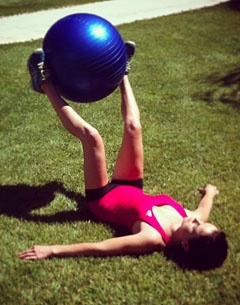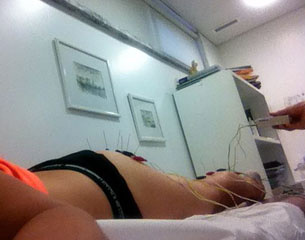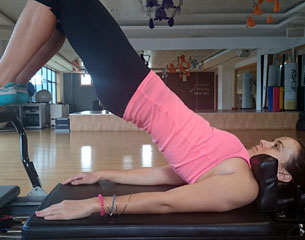
After injuring the tendons in my hip I was forced to take some months off to let the area recover. It was a major emotional struggle and still is. During this time Batialo started work in-hand. I wanted him to learn piaffe from the ground first anyway, as I feel this was the best way to teach Batialo, but of course every horse is different.
I got help from a jumping rider, because I didn’t really want someone to continue his dressage training. This may seem strange, but my goal has never been to win or race up to Grand Prix. My goal was always to start a journey with a 4-year old horse and write about the highs, the lows, and the learnings along the way.
So needless to say I didn’t want to miss a major chunk of that. The reward, or success, for me is teaching my horse something new and feeling his excitement at having got it right, and my excitement at having taught him. I started to invest more in my own recovery during this time, and try to strengthen the internal muscles that have been stuck for quite possibly ten years.
I used to think being strong was about muscleand lifting weights, but I very quickly learned that strength is about relaxation, flexibilty and balance. Imagine that weights training is a flashy extended trot and Pilates is how you get to piaffe and passage.
 So I began with Duda Tranquilo, a Portuguese pilates instructor/surfer, who understood very well, my “need” to ride when I asked him straight out, “how do you feel when you can’t surf?” There was a lot of eye rolling in the beginning. To be honest, I have a huge fear about moving my hips in different directions, because in the back of my mind there is that thought “they might break.”
So I began with Duda Tranquilo, a Portuguese pilates instructor/surfer, who understood very well, my “need” to ride when I asked him straight out, “how do you feel when you can’t surf?” There was a lot of eye rolling in the beginning. To be honest, I have a huge fear about moving my hips in different directions, because in the back of my mind there is that thought “they might break.”
I began slowly and gradually I am building up confidence, but there comes a point in your life when you have to accept that the movements that might actually cause more pain or aches, are the ones you need to gain more strength and balance. You can’t just spend your life not moving that area, because it will only grow more stiff and more rigid, and then you compensate with other parts of your body and you develop new pains. Futhermore, your horse is the one who will most suffer if you are stuck in some part of your body and he will learn to compensate himself for that imbalance.
Beyond the body, the mind of the rider is actually even more important. People discuss position, and the correct aid, over and over, and I find that none of this matters if your mind is not relaxed or set up for riding.
 Then comes in three crucial aspects; confidence in your own body, confidence in your horse and your horse's confidence in you. None of these can exist alone. It is a triangle of factors that must be in play at once. To be confident in your body you can’t be riding with pain. For your horse to be confident in you, you need to be riding with tact and feeling, and every thing you do on the horse must have a release and it must make sense!
Then comes in three crucial aspects; confidence in your own body, confidence in your horse and your horse's confidence in you. None of these can exist alone. It is a triangle of factors that must be in play at once. To be confident in your body you can’t be riding with pain. For your horse to be confident in you, you need to be riding with tact and feeling, and every thing you do on the horse must have a release and it must make sense!
Pilates helps you to understand that. When you flex a muscle, you learn to appreciate and be aware of the others muscles that release at the same time. If you are just flexing the muscles all the time, with no release, they break down. You learn to breathe in, as you stretch, and breathe out as you release, and all the while you understand that whatever action you have on the horse, has an equal and opposite reaction.
If you are just pulling and kicking all the time, the reaction will never be a good one!
by Sarah Warne